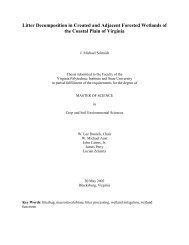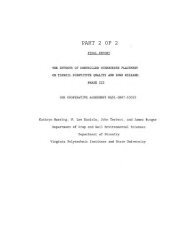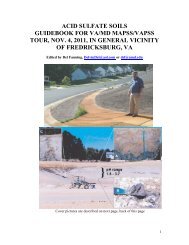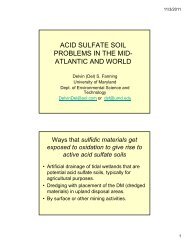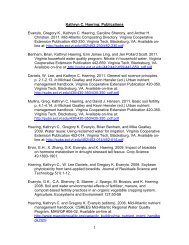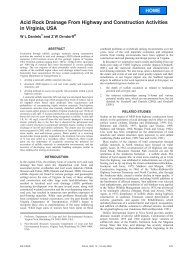Remediation of PAH-Contaminated Soils and Sediments: A ...
Remediation of PAH-Contaminated Soils and Sediments: A ...
Remediation of PAH-Contaminated Soils and Sediments: A ...
You also want an ePaper? Increase the reach of your titles
YUMPU automatically turns print PDFs into web optimized ePapers that Google loves.
Figure 8. Possible mechanism for direct photooxidation <strong>of</strong> <strong>PAH</strong>s (Vione et al.,<br />
2006)<br />
As mentioned previously <strong>PAH</strong>s are hydrophobic <strong>and</strong> therefore tend to be found in<br />
<strong>PAH</strong>-particle associations. The rate <strong>of</strong> photooxidation is dependent upon the<br />
nature <strong>of</strong> the particle associated with the <strong>PAH</strong>. Research has found that <strong>PAH</strong>black<br />
carbon associations have much longer half lives than do <strong>PAH</strong>-dissolved<br />
organic matter. The changes to photooxidation rates are most likely the result <strong>of</strong><br />
particle color <strong>and</strong> therefore the quantity <strong>of</strong> wavelengths that the material can<br />
absorb. Black carbonaceous materials tend to absorb the wavelengths that may<br />
have photooxidized the associated <strong>PAH</strong>. Research conducted on <strong>PAH</strong>-particle<br />
associations with white materials such as silica <strong>and</strong> alumina support this<br />
conclusion <strong>and</strong> have resulted in higher rates <strong>of</strong> photooxidation (Vione et al.,<br />
2006).<br />
39



